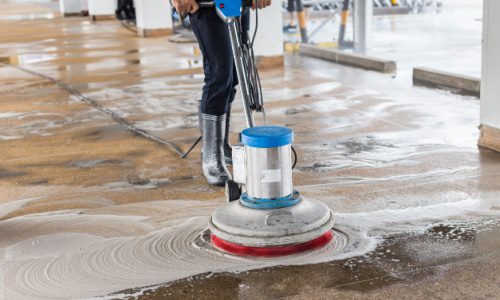Who’s got time to clean!? In today’s fast-paced commercial environments, maintaining cleanliness is more than just an aesthetic concern—it’s a critical component of health, safety, and operational efficiency. Traditional cleaning methods, while foundational, often fall short in meeting the demands of modern facilities. Cleaning professionals are more focused than ever on finding new ways to clean better and faster to increase their level of clean and grow their business. Advancements and innovations help them up their cleaning game while saving them time and effort so they can ultimately help more businesses with their cleaning challenges.
The Challenges: Limitations of Traditional Cleaning Methods
Traditional cleaning approaches often rely heavily on manual labor and chemical agents. These methods can be time-consuming, inconsistent, and environmentally taxing.
- Inefficiency: Manual cleaning is labor-intensive and may not consistently achieve desired cleanliness levels, especially in large commercial spaces.
- Environmental Impact: The use of chemical cleaners contributes to environmental degradation and can pose health risks to cleaning personnel and building occupants.
- Inaccessibility: Narrow and congested high-traffic areas, expansive floor spaces, and high windows are difficult to clean thoroughly without specialized equipment.
Embracing Commercial Cleaning Innovation
The evolution of commercial cleaning technology offers solutions that address these limitations head-on. Since you don’t have all day, let’s review just 3 of these innovations.
- Mechanized Floor Cleaning with Smart Features
Modern floor scrubbers and vacuum sweepers have transformed the way large floor areas are maintained. These machines offer consistent cleaning results, reduce labor costs, and provide a high level of clean with a fraction of the effort. Automatic floor scrubbers provide efficient cleaning solutions tailored to a wide range of commercial facility sizes and needs.
Modern floor scrubbers have advanced significantly with features like automatic solution dosing, real-time diagnostics, variable pressure systems, and battery optimization. IPC’s CT51 features ergonomic design with traction drive, the versatility of 4 interchangeable brush heads, and pre-set working programs to simplify operation. These machines not only clean faster but also have the ability track water and detergent usage, reducing waste and labor hours. Many machines also feature Eco Select, which decreases water and energy consumption while lowering the noise level of operation.
- Automation and Robotics
The integration of robotics into cleaning tasks has led to autonomous machines capable of navigating and cleaning spaces with minimal human intervention. These robots enhance productivity by reducing manual labor and ensure consistent cleaning standards across facilities.
- Pure Water Window Cleaning Systems
Traditional window cleaning often leaves water spots due to mineral deposits in tap water. Pure water systems, utilizing reverse osmosis and deionization, eliminate these impurities, resulting in spot-free finishes without the need for chemical cleaners or manual drying. Pure Water Professional Window Cleaning Systems that utilize this technology can save time, promote sustainability, and increase safety when coupled with the right high reach cleaning poles and brushes.
Benefits of Leaning Into Cleaning Innovation
Implementing advanced cleaning technologies and methodologies can uplevel your cleaning routine.
- Consistent Results: Mechanized equipment provides a higher level of clean with less manual effort.
- Enhanced Efficiency: Automated systems create more uniform cleanliness standards and reduce labor requirements.
- Environmental Responsibility: Reducing chemical, water, and energy consumption aligns with environmental initiatives and promotes a cleaner, safer, healthier world.
- Cost Savings: Long-term operational costs decrease due to reduced labor hours and chemical savings.
As commercial spaces grow in complexity and expectations for hygiene rise, relying on traditional cleaning methods is no longer enough. By embracing the latest advancements in mechanized equipment, automation, and innovative cleaning technologies, service providers can deliver consistent results, reduce operational costs, and improve safety across all environments—indoors and out. The future of cleaning isn’t just about doing more—it’s about doing it better, faster, and smarter.
Contributed by IPC North America
